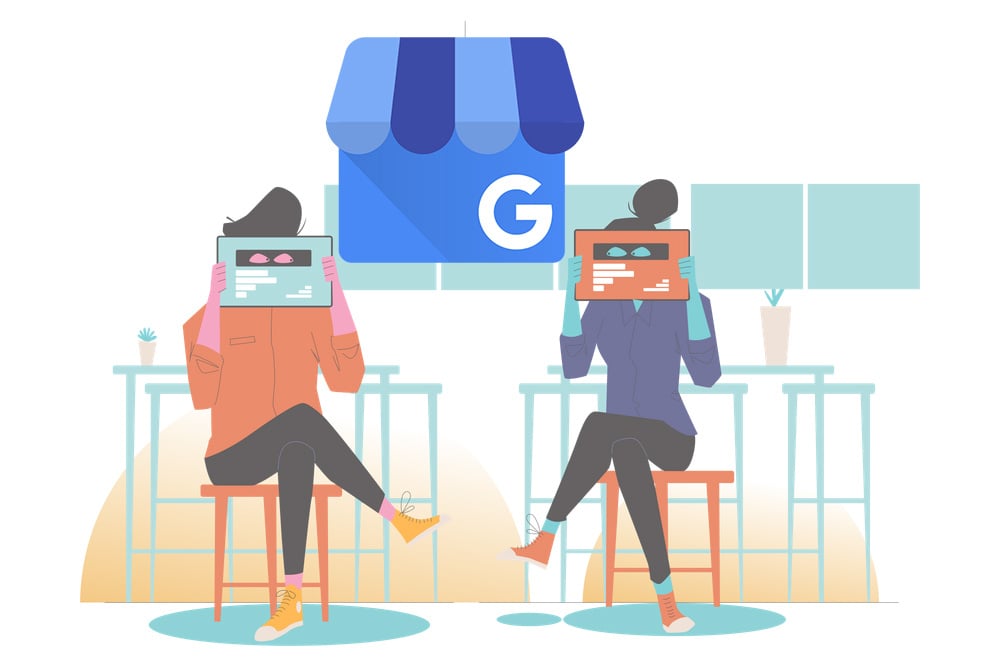What Should You Ask on a Client Satisfaction Survey?
Can’t decide which customer satisfaction survey questions to ask in your next survey? Here is an ultimate guide to your rescue!

When it comes to home services, keeping your homeowner clients happy is essential for the long-term success of your business. One way to ensure that you meet their needs is by conducting a client satisfaction survey.
By asking the right questions, you can gain valuable insights about what your customers want and how to better provide them with great service. In fact, client satisfaction has never been more critical.
According to a 2020 Qualtrics insights report, 94% of clients who had a "very good" experience with a company were likely to recommend it
The reality is that only the most unhappy customers are likely to tell you how they feel. Slightly unhappy or apathetic customers will probably keep their feelings to themselves, unless you are proactive to solicit their feedback. And once you do, 9 out of 10 times you’ll find that just a few simple adjustments are all it takes to delight those customers and generate powerful word-of-mouth.
By creating a comprehensive customer survey and then asking the right questions, you can gain valuable insight into what your clients actually think of your products and services – helping you make better decisions for future growth.
In this blog post, we’ll discuss the importance of customer satisfaction surveys for home services businesses and how to create your own survey. With this information in hand, you’ll be able to better understand what customers think about your business and make changes accordingly to ensure they keep coming back.
Jump to:
-
Customer Satisfaction Survey: An Overview
-
Types of Customer Experience Surveys
-
How To Calculate Customer Satisfaction Level?
-
Customer Satisfaction Survey Question Types
-
Customer Satisfaction Survey Templates
-
Why Online Reviews Offer Some of the Best Customer Feedback
-
How To Integrate Surveys Into Your Workflow
Customer Satisfaction Survey: An Overview
If you’re a local home services business, these handy questionnaires are a way of gathering feedback from customers about their experience with your business. They can be administered online, through email, by phone, or even in person.
By collecting this information, you can learn how to improve the quality of your services and make sure that your client base remains loyal and satisfied. The questions on a customer satisfaction survey should focus on the overall customer experience they had when dealing with your business, such as:
- Was doing business with you easy? Why or why not?
- Did they feel valued as customers?
- Did the service they received meet their expectations? Why or why not?
- Was there anything that could have been done better?
- Was there anything that you did exceptionally well?
Asking these questions helps you gain valuable insights into your client’s experience and ensures that you provide service that meets – or, better yet, exceeds – their expectations.
Types of Customer Experience Surveys
Client satisfaction surveys come in all shapes and sizes - you can choose to collect quantitative or qualitative data, and there are different types of surveys you can use depending on your goals.
We'll cover what to actually ask your clients shortly. But before that, let's dive into the three most popular types of client satisfaction surveys: net promoter score, customer effort score, and customer satisfaction.
Net Promoter Score

Source: Bembria
The Net Promoter Score is a survey based on one, simple question: How likely are you to recommend our product or service to a friend?
This question allows customers to provide feedback that can be turned into an actionable score.
Responses are grouped into three categories: promoters (9-10), passives (7-8) and detractors (0-6). The final score is calculated by subtracting the percentage of detractors from the percentage of promoters.
NPS is effective precisely because it abstracts away the dozens of questions that *could* be asked, and instead focuses on a single question with a high correlation to customer loyalty. It's an easy way to measure how your customers feel about your product or service, and one of the most popular customer satisfaction surveys used today.
Customer Effort Score

Source: CX Central
A Customer Effort Score is a metric that measures how much effort your customers have to go through in order to interact with you. It's based on the idea that if your customer service channels require too much effort, they'll be less likely to use them.
CES surveys often consist of just one question: how easy was it for you to achieve this task? It can also include follow-up questions asking why the customer found it difficult, and how you could improve the process.
The CES is a great way to measure customer experience and identify areas of your business that need improvement. It's also useful for projecting customer loyalty - if customers find it easy to interact with you, they're more likely to stay loyal in the long term. And it's extremely easy to build and administer - all you need is (like in the case of NPS) one simple question.
Customer Satisfaction

Source: Get VOIP
Lastly, customer satisfaction surveys are a great way to measure customer experience and identify areas of improvement. They typically consist of multiple questions, often on a scale from 1-5 or 1-10, asking customers to rate their overall experience with your product or service.
Customer satisfaction surveys allow you to go into more detail than NPS and CES. You can ask about the quality of your products, the accuracy of your estimates and invoices, how timely deliveries were made - basically, anything related to customer experience. Then, you can organize answers by demographic, customer group or other variables to get a more detailed picture of who's most and least satisfied during various stages of the customer journey.
How To Calculate Customer Satisfaction Level?
Customer satisfaction level (CSAT for short) is a metric used to measure how satisfied customers are with your product or service. It's calculated by taking the total number of positive responses and dividing it by the total number of respondents. The result is expressed as a percentage, from 0% (no one was satisfied) to 100% (everyone was satisfied).
Here's a simple formula to calculate customer satisfaction level:

Source: Question Pro
CSAT is powerful precisely because it provides a single, clear number that you can use to track customer satisfaction over time. It's also easy to compare your CSAT against industry standards or competitors (though self-reports can be unreliable, so take those with a grain of salt).
Customer Satisfaction Survey Question Types
When it comes to customer experience surveys, there are dozens of types of questions. Each has their own advantages and disadvantages and can be used to collect different types of data. Here are some of the most popular, complete with examples of what each class of question looks like:
Open Ended Questions
Open-ended questions are those that allow customers to answer with whatever they feel is appropriate. These types of questions usually start with “why” or “how,” and don't have a fixed set of answers. They're great for getting detailed feedback on specific topics, but can be difficult to analyze given the varied responses you may receive.
- What do you think could be improved about our product/service?"
- "What was the most enjoyable part of your experience with us?"
- "How can we make your next visit/purchase even better?"
Rating Scale Questions
Rating scale questions are those that ask customers to rate their experience on a predetermined scale, usually from 1-5. This type of question is great for collecting quantitative data and making comparisons between different products or services.
- "How would you rate your overall satisfaction with our product/service?"
- "On a scale of 1-5, how likely would you be to recommend us to a friend or colleague?"
- "On a scale of 1-5, how would you rate our home services site?"
Binary Questions
Binary questions are those that require a yes or no answer. They can be used to quickly determine customer satisfaction without overwhelming them with too many open-ended questions.
- "Are you satisfied with the quality of our product/service?"
- "Did our support team resolve your issue in a timely manner?"
- "Do you think our pricing is fair?"
Likert Scale Questions
Likert scale questions are similar to rating scale questions, but with a twist. They use statements that customers must agree or disagree with - the customer scores themselves from 1 - 7, depending on how strongly they agree or disagree. For example, propose a statement (such as one of the three below) and let them choose from “Strongly agree,” “Agree,” “Neither agree nor disagree,” “Disagree,” and “Strongly disagree.”
- "I found the product/service to be of exceptional quality."
- "The customer service team was friendly and helpful."
- "I would recommend this product/service to others."
Multiple Choice Questions
Lastly, multiple choice questions are those that give customers a set of predetermined answers to choose from. These types of questions are great for quickly assessing customer opinion and making comparisons.
- "What do you think is the most important service we provide?" [List of 3-5 of you core services]
- "What color would you prefer for our product/service?" [List the colors you offer.]
- "What type of support did you find most helpful?" [List the different types of support you offer.]
Customer Satisfaction Survey Templates
Questions are great - but full templates are even better. Having a pre-made customer satisfaction survey template can save you time, energy and stress when crafting your own.
We’ve put together a few templates below to get you started - just copy the questions into your own survey tool of choice and customize as needed!
Product/Service Feedback Questions
Thanks so much for taking the time to share your feedback with us!
- How would you rate your overall satisfaction with our product/service? (long text)
- On a scale of 1-5, how likely are you to recommend us to a friend or colleague? (1-7 likert scale)
- What did you like most about our product/service? (open ended)
- What could we improve about our product/service? (open ended)
- Do you have any other comments, questions or suggestions? (open ended).
Customer Loyalty Questions
We appreciate your loyalty!
- How likely are you to continue using our product/service in the future? (1-7 likert scale)
- Is there anything we could do to make your experience even better? (open ended)
- What would encourage you to recommend us to friends and family? (multiple choice)
- Better pricing
- More features
- Faster delivery times
- Other (please specify): ____
- Have you encountered any issues with our product/service? (binary question)
Demographic Survey Questions
We'd love to know a bit more about you!
- What is your gender? (multiple choice)
- Male
- Female
- Other (please specify):_____
- How old are you? (numeric question)
- What region do you live in? (multiple choice - list out regions/countries, or use dropdown menu for selection).
Website and Navigation Survey Questions
We'd love to know what you think of our website/app!
- How easy was it to find the information you were looking for? (1-7 likert scale)
- Was there anything confusing about navigating our website / app? (open ended)
- What do you think could be improved about our website/app navigation? (open ended)
- How likely are you to use our website/app again in the future? (1-7 likert scale)
General Client Satisfaction Survey Questions
We'd love to hear your thoughts on our company as a whole!
- How would you rate the overall quality of our customer service? (1-7 likert scale)
- Are there any changes we could make to improve your experience with us? (open ended)
- What do you think sets us apart from other companies in our industry? (multiple choice)
- Quality
- Customer Service
- Price
- Variety of products/services
- Other (please specify):_____
- How likely would you be to recommend us to a friend or colleague? (1-7 likert scale)
Why Online Reviews Offer Some of the Best Customer Feedback
As a local home services business, getting feedback from your clients is essential to understanding their experience. But it’s not just about pleasing customers – it can also help you identify areas where you can improve or grow your business.
Here are some great reasons why asking for client feedback is so important:
- Strengthen your relationships with clients. Taking the time to ask for feedback shows that you value their opinion and are invested in improving their experience. This can help build stronger, more loyal relationships between you and your customers.
- Make informed decisions. Collecting client feedback gives you a wealth of valuable information about your local market. This data (we know it can be a scary word, just think of it as information) can be incorporated into your plan to run and grow your business, giving you a greater chance for success.
- Monitor progress. Asking for assessments on a regular basis can help you track how well you’re meeting customer expectations over time. These results can be used to adjust how you operate in the future or suggest new advertising strategies to entice more business.
As you can see, there are numerous benefits to asking for client feedback. It’s an invaluable tool that can help you better understand your customers, strengthen relationships with them, and identify opportunities to expand your business.
Online Reviews Reveal Customer Feelings, Needs, and Opinions
Asking clients for feedback allows them to share what they like (and don't like) about your services. This knowledge can be invaluable in helping you refine how you deliver those services and meet customers’ needs better.
Online Reviews Boost Your Online Visibility
Reviews boost your online visibility by improving your rankings in local search results. Businesses with dozens of high-quality, five-star reviews on Google almost always rank higher than those with few or none.
Additionally, reviews provide valuable insights into untapped markets or trends in customer behavior that you may not have been aware of before. This knowledge can open up new doors and help inform your decision-making moving forward.
Even Bad Reviews Give You an Opportunity to Demonstrate Proactive Conflict Resolution

Source: Facebook
No one enjoys seeing a negative review, but they can be an opportunity for you to demonstrate your commitment to customer service.
Respond quickly and professionally to any criticism or complaints, and use the chance to show potential customers that you are serious about resolving issues in a timely manner.
A great formula for responding to negative reviews is to follow these four tips:
- Acknowledge their feelings and concerns.
- Apologize for any inconvenience they may have experienced.
- Offer a solution or suggest how you can make it right.
- Never be reactive or defensive. Always be kind, patient, and proactive.
This will demonstrate that you’re taking customer feedback seriously, and that you value their experience above all else.
How To Integrate Surveys Into Your Workflow
Once you’ve figured out which types of questions to include in your surveys, the next step is to figure out how and when to send them. Here are some tips for integrating customer experience surveys into your workflow:
1. Send surveys at the end of a customer journey. Surveys are most useful when sent after a customer has completed their entire experience - this will allow you to assess their overall satisfaction and make changes accordingly.
2. Make sure your survey is easy to fill out. No one wants to complete a long, complicated survey - keep it short, sweet and to the point so customers don't get overwhelmed or frustrated with it.
3. Integrate surveys into your customer service system. Utilize automated survey emails that are triggered by certain events or milestones in the customer journey - this will help ensure that customers complete them at the right time and provide more accurate data.
4. Follow up with customers who leave a negative rating. If you receive a low rating, reach out to the customer directly and ask for more feedback on what went wrong so you can make improvements quickly.
That's a wrap! We hope this guide has given you some insight into crafting effective customer experience surveys. With the right questions and a good workflow, you'll be able to collect accurate data that can help your business grow.
%20(1)%20(1).png?width=340&name=Group%2012%20(2)%20(1)%20(1).png)




